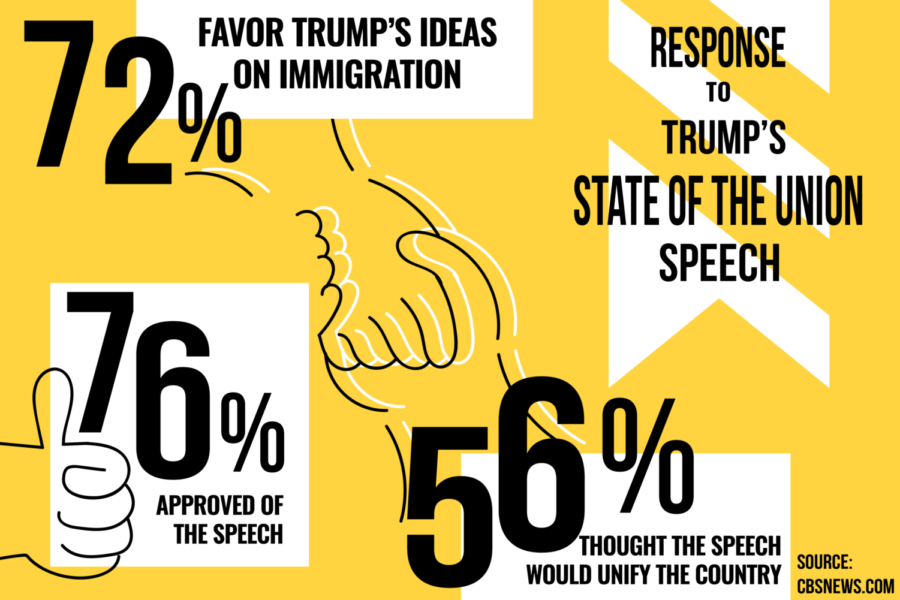Trump State of the Union speech receives mixed responses
President Trump’s State of the Union speech has garnered responses from watchers, both positive and negative. The Sidekick staff writer Camila Villarreal discusses the main points of Trump’s speech and Coppell citizen’s reactions.
February 13, 2019
On Feb. 5, President Donald Trump delivered the State of the Union (SOTU) speech to outline his priorities, his accomplishments and the state of the country’s economy.
The U.S. Constitution requires the president to deliver this speech annually, and it is often delivered during times of economic strain or war. Most SOTU speeches occur in January, but because of the government shutdown, Speaker of the House Nancy Pelosi rescheduled it.
Seventy-six percent of Americans who watched the speech approved of Trump’s performance, with primary viewers being from the Republican Party.
“It was probably one of the greatest State of the Union [speeches] I’ve ever seen; it was all about coming together as a country, which was really positive,” IB Economics teacher Jared Stansel said. “As far as all of the domestic policies go, I thought it was really good. When [Trump] made a shoutout to that ICE agent and thanked him for his work in bringing 300 pedophilic sex traffickers to justice, I was astonished that not everyone had stood up and applauded. It should have been a unifying thing.”
Trump approached immigration issues in a different way than we have observed during his presidency. Instead of threatening to declare a national emergency or shut down the government, he urged funding for the U.S.- Mexican border wall.
He also spoke on issues concerning HIV infections and high prescription drug prices, both of which he promised to end, along with the U.S military presence in Middle Eastern countries such as Syria and Afghanistan.
Now that the Democrats control the House, Trump asked for unity and bipartisanship, although many jabs at the Democratic Party were interpreted throughout the speech.
“It was almost like he gave two speeches in one,” AP World History teacher Connor Blake said. “[Trump] was talking about unity and working together, but then switched to divisive politics. It’s almost like he didn’t know what speech to give.”
In spite of the praise Trump received for his speech, many journalists and news networks found much of what he said to be ironic or hypocritical, such as his claims about the advocacy for more legal immigrants after previous attempts to cut legal immigration, or the rejection of “politics of revenge” following an executive decision to shut down the government due to disagreement in funding for the border wall with the Democratic Party.
“Contentwise, it was full of half-truths,” New Tech High @ Coppell sophomore Matt Maurer said. “It was a very well-played speech, with attempts to score cheap political points and lies to make the GOP and Trump presidency seem like a revolutionary way of governing when in reality, it’s the same tired dance and song we have been seeing from the Republican Party for the past decade.”











